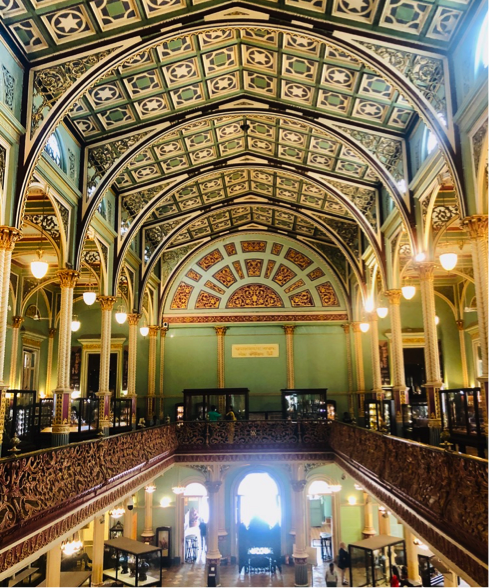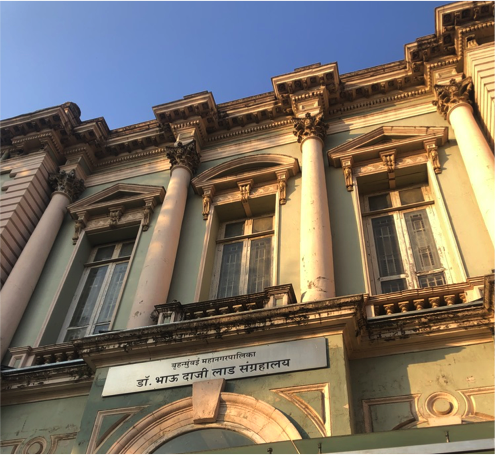By Claire Sharp
Bachelor of Arts, Majoring in Economics and Political Economy
Today we visited the Dr Bhau Daji Lad (BDL) Mumbai City Museum, Mumbai’s oldest museum. The opening exhibition engaged a quote by Italo Calvino that I found very relevant to the experience of Mumbai,
“Cities, like dreams, are made of desires and fears. Even if the thread of their discourse is secret, their rules absurd, their perspectives deceitful and everything conceals something else.” – Italo Calvino, 1972, “Invisible Cities”
Calvino and the museum exhibition entice you to look beyond the appearance of the city into its language and history, and further how it is portrayed in the urban architecture.
Mumbai, like many cities around the world, has a deep history entrenched in British colonial history. Colonial aesthetics are infused in much of the architecture throughout the city. This was illustrated by the structure and design of the BDL Museum.

During our museum tour, we learned an important aspect of Mumbai’s environmental history, that is concealed beneath the very ground this museum stood.
The booming city of Mumbai was not always the appealing, fast paced and progressive city that it is today. The British called the municipality of Bombay after its Portuguese name “Bom Bahia” or “Good Bay”, which was then renamed again in the 20th century to Mumbai in honour of the earliest inhabitants of the land.
Originally seven small islands, Mumbai was gifted to King Charles II of England in 1661 as a part of the dowry for his marriage to the Portuguese princess Catherine of Braganza. It is hard to believe after our experiences in Mumbai over the last week that in its earliest days the area was extremely unattractive to the British due to their belief in the areas incapability to develop.
Our guide Tamara explained to us that after Charles was gifted the islands, they were rented out to the East India Company at an annual rent of ten pounds. Put in perspective, ten pounds at the time could also get you a pound of tea!
The opening of Mumbai’s main port as well as the outbreak of the American civil war allowing for a competitive cotton trade market and increased opium trade with China triggered Mumbai’s economic growth expanding the island city. In 1947 India gained independence from the British transitioning Mumbai in to one of India’s largest metropolises.

Fast forward to today, the British colonial legacy remains visible in the architecture of the city. During the period of British rule these public buildings served two ideological purposes: to establish India as a subject of European power, and to construct the cultural superiority of the British.
The juxtaposition between the neoclassical buildings to traditional Indian structures are a constant reminder of the great differences between the two nations emphasising the cultural dominance of the British.
The BDL building while housing predominately Indian historical items is rich with European influence.
As discussed on the tour, the building was only recently, in 2008, restored to its original structure in which the museum retained the British influenced architecture of the building.
In the course of our tour, we also peered into curious cabinets containing figurines and miniature village settings. The figurines were detailed archetypes, or more rightly stereotypes, of men and women from different castes and regions across India. We learned that these displays were used to educate the colonial officials in Mumbai about the types of people they may encounter, and their place in the social and economic order according to the British.
These cabinets invite us to reflect on the colonial desires they served.
We saw colonial aesthetic influence in a number of other places across southern Mumbai, for instance, in design at the Gateway of India and many other buildings in Colaba built in the neoclassical style. Many of these buildings are public institutions and museums, and others are commercial with restaurants and high end retail.
Mumbai exemplifies the dichotomy of the British legacy and the growing modern cities of India. Italo Calvino describes that “the city, however, does not tell its past, but contains it like the lines of a hand”.
The architecture that is a constant remainder of colonisation also embodies the city’s history that makes it so unique.

